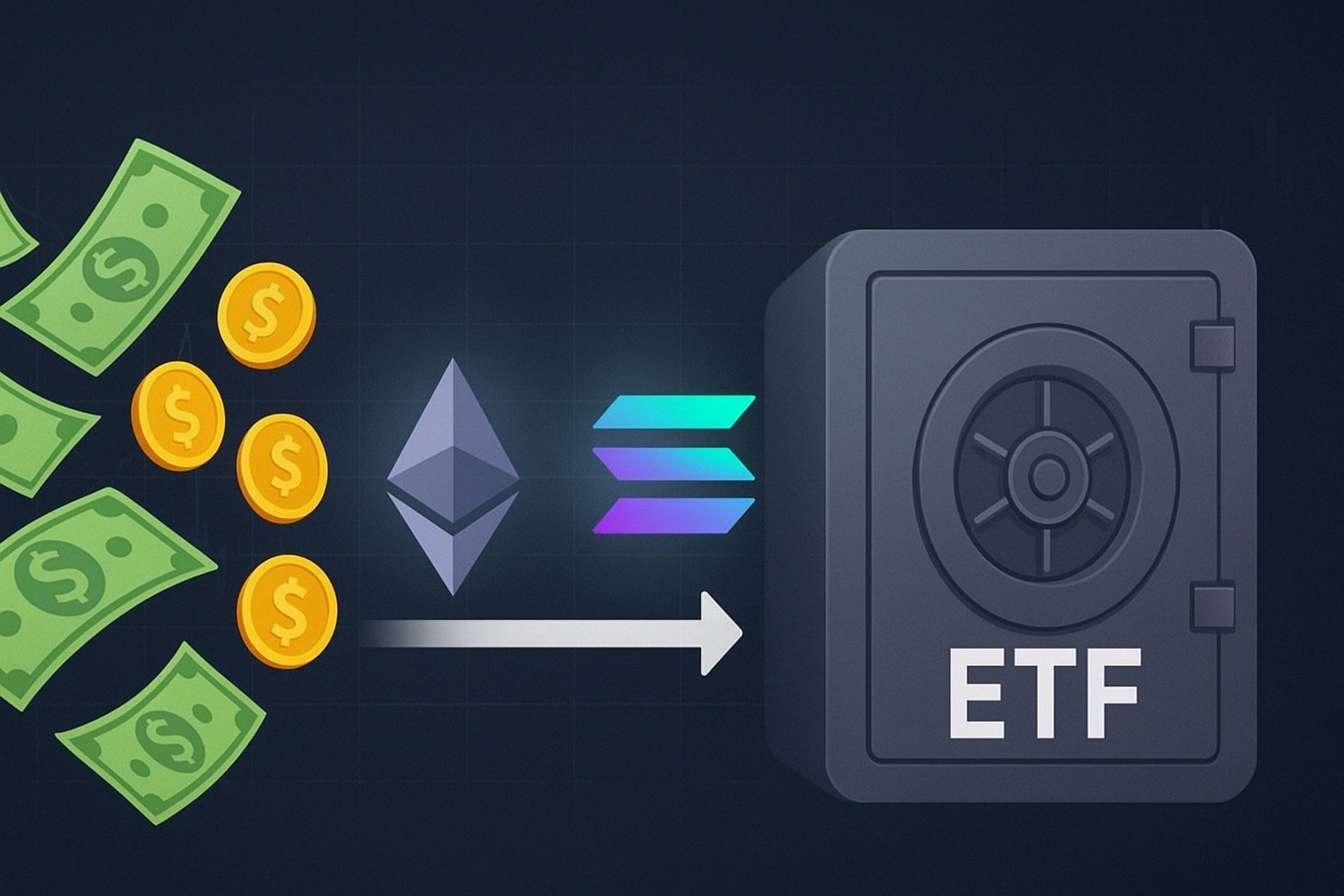The SEC has recently approved staking in Grayscale’s Ethereum and Solana ETFs after confirming that staking does not break any securities laws.
This is the first time staking has been allowed inside ETFs in the United States, and it’s something more traditional investors have been waiting for. This is due to the fact that staking gives a yield, just like dividends, which is very enticing to traditional investors.
Grayscale Leads the Way
Grayscale made the announcement on Monday. Its two Ethereum ETFs are now the first ETFs to offer staking options, which the asset managers will use by reinvesting the rewards to improve returns for holders.
In addition to this, Grayscale has approval for GSOL, the first Solana staking ETF. The company called the move another “first mover milestone,” and that description fits.
The Floodgates Are Opening
This development opens the floodgates. Once staking in ETFs was approved, big inflows were always expected given that Wall Street and traditional finance is always seeking yield or, in other words, dividends.
Ethereum and Solana both have staking, proof of stake, built into their networks. That makes them naturally attractive, even during down markets, because investors can still earn rewards through staking.
Large institutions like BlackRock, Fidelity, and others are now preparing to launch their own staking-enabled products.
A Landmark Moment for Crypto
It’s a landmark moment for crypto in the United States and across the world as, after years of uncertainty, regulators are finally giving the green light to products that merge traditional finance with blockchain technology.
It will give asset managers like Grayscale the confidence to advise that a portion of wealthy individuals’ portfolios be allocated to cryptocurrencies within their ETF.
More liquidity flowing into Ethereum and Solana could help stabilize prices over time, but it raises a few concerns too. As more institutions start offering staking ETFs, control over large amounts of staked crypto could start concentrating in the hands of fund managers. That’s great for market growth, but it might weaken the decentralized nature that made these networks special in the first place.
What Investors Should Know
However, investors should be made aware of what comes with ETFs. When you buy an ETF, you don’t hold the private keys to the underlying assets, the asset management company does.
While that’s normal for traditional financial products, it goes against the self-custody principle that cryptocurrency was built on. On top of this, you have to pass invasive ongoing KYC checks.
So while this is great news for the market and will undoubtedly bring in a lot of new investment, many long-term crypto believers will still prefer to hold their own coins and stake directly. Staking directly could also offer much larger returns depending on the coin staked.
ETFs may make it easier for traditional investors, but they also take away some of the freedom that makes crypto unique.
Staking Directly
For those who prefer full control, staking directly remains the purest way to participate. You get to keep your own keys, have the freedom to move your coins at any time, and enjoy higher yields without any middlemen.
Among the most reliable tools that offer this level of freedom and high yields without sacrificing modern convenience is Best Wallet. A no-KYC, non-custodial wallet, Best Wallet offers a wallet-based on-chain staking experience that’s difficult to find elsewhere.
The staking options available on this platform are diverse, thanks to its integration of multiple chains. Right now, it supports six blockchains, including Bitcoin, Ethereum, Solana, Polygon, Binance Smart Chain, and Base, making it possible for investors to explore and manage multiple high-yield staking facilities conveniently in one place.
The goal is to continue expanding its list of supported blockchains and listed coins, giving investors more than enough staking opportunities to maximize their returns.
Accessing staking perks on Best Wallet is a simple matter of opening the mobile app, going to the apps menu, and selecting staking. Supported cryptos offer high-yields ranging from 5% to 20%, and no one except users have access to their private keys, assets, and rewards, thanks to its non-custodial design.
That said, Best Wallet’s staking perks aren’t limited to what is provided on the platform – its multi-utility token BEST, which is currently live on token sale, offers 81% APY at press time, giving investors another way to earn high returns.
In addition to staking and standard wallet functionalities, Best Wallet also acts as a crypto trading platform, enabling users to execute simple crypto purchases using fiat and engage in cross-chain swaps without leaving the app. There’s also a token launchpad featured on the website, allowing users to invest in ICOs.
Due to these features, Best Wallet has gained favor among analysts such as 99Bitcoins, and others.
Download Best Wallet
This article has been provided by one of our commercial partners and does not reflect Cryptonomist’s opinion. Please be aware our commercial partners may use affiliate programs to generate revenues through the links on this article.
